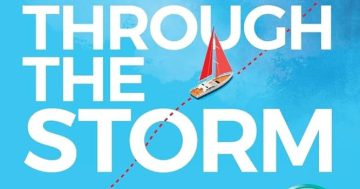John Eades* says in an increasingly complex and pressured world, leaders face challenges their predecessors never experienced. He has advice on how to deal with some of them.
 As he verbalised his most significant leadership challenge, it was apparent there wasn’t a simple solution.
As he verbalised his most significant leadership challenge, it was apparent there wasn’t a simple solution.
“Our company looks at its leaders as player-coaches, so I am responsible for my results and the results of my team,” he said.
“How do I balance driving results with taking care of my people?
“How do I meet my own deadlines when I have to train the new hire on my team who is struggling?”
What this high-potential, front-line manager described is a macro challenge faced daily by not just him, but many leaders.
The reality of the situation is that he didn’t have to choose one or the other. He had to commit to both.
As a leader, he is responsible for the people who are responsible for the results.
As an individual contributor on the team, his results are his responsibility.
Thus, making the balance of time and energy between both responsibilities is the key to his success.
This common, yet complex challenge got me thinking about the more extensive balancing acts leaders face every day.
These are the three significant challenges leaders face daily:
Metrics vs. People: There’s a substantial difference between the title of ‘manager’ and the actions of a leader.
One is vastly more important than the other in today’s business environment.
However, most job responsibilities for people in positions of leadership are related to reporting metrics and sending performance reports.
While there is nothing wrong with the metrics, many tasks eventually will be automated and replaced by technology.
The more leaders focus on team members and their daily habits and behaviour, the better the results will be.
Love vs. discipline
The best leaders today use a style of leadership, often referred to as ‘servant leadership’.
Author, Pat Lencioni says it well: “We shouldn’t call it servant leadership anymore; we should just call it leadership.”
While Lencioni is 100 per cent correct, leaders also need a methodology to lead this way.
In our research, we’ve studied leaders who do this well.
The common thread was their ability to balance high levels of love and discipline in the way they lead.
While some may shy away from using the word love in the workplace, I assure you it’s in no way referring to any sort of HR violation.
Instead, I define love as “to contribute to someone’s long-term success and wellbeing”.
Researchers at the University of Berkley studied what motivates productivity in professionals.
They found when people felt recognised for the work they did, they were 23 per cent more effective and productive.
What’s even more astonishing is that when people felt valued and cared for, their productivity and effectiveness experienced a 43 per cent increase.
While recognition is essential, there was an additional 20 per cent jump in performance by showing your people you care or love them.
Therefore, if you have love, you must also have its counterpart, discipline.
I define discipline as “to promote standards in order for an individual to choose to be at his or her best”.
This means setting high standards and holding others accountable for meeting and exceeding those standards.
Achieving a balance of love and discipline in a servant leadership approach is not an easy task.
The best leaders not only embrace the challenge, they excel at it giving their team high levels of both.
Short vs. long-term decision-making
Often short-term and long-term views can contradict each other, while at other times they are in direct alignment.
In today’s business cycle, most leaders are prioritising the short-term over the long-term, and who can blame them.
The pressure lends itself to “get results now, and we will deal with the future later”.
I coach leaders to leverage former US Secretary of State, Colin Powell’s 40-70 Rule when making a tough decision; then running it through both the short and long-term ramifications.
Mr Powell says: “Every time you face a tough decision, you should have no less than 40 per cent and no more than 70 per-cent of the information you need to make the decision.”
This makes so much sense because if you are making a decision with less than 40 per cent of the information, you are taking a wild guess.
However, if you wait until you have more than 70 per cent of the information, you are making it too late.
The art of this rule is using your intuition, experience, expertise, and also the priorities of short vs. long-term ramifications.
I told the leader I mentioned at the beginning: “If leadership were easy, everyone would do it.”
He is capable of navigating these challenges and so are you.
You have chosen to be a leader and to embrace the responsibilities that come with the territory.
Your people are counting on you to rise to the challenge.
*John Eades is the Chief Executive of LearnLoft a leadership development company. He is also the host of the Follow My Lead podcast. He can be contacted at johneades.com.
This article first appeared on John’s LearnLoft blog.











